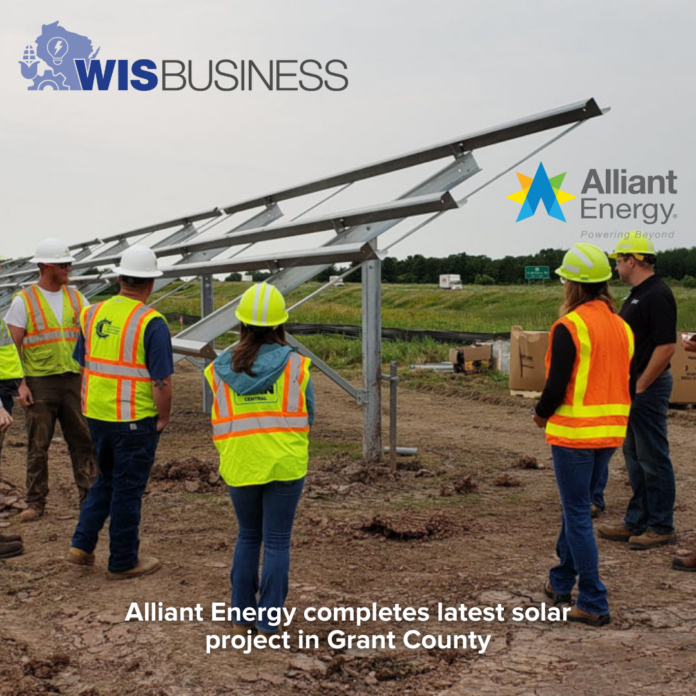Alliant Energy has finished a large solar project in Grant County that will produce enough energy each year to power more than 50,000 homes, the Madison-based utility announced.
Construction on the 200-megawatt Grant County Solar Project started in September 2022 and involved more than 700 workers, according to the recent release. Covering more than 1,400 acres, the site in Potosi is blanketed by more than 430,000 solar panels.
Lisa Barton, Alliant Energy’s president and CEO, says the project’s completion is a “milestone achievement” in the company’s clean energy transition. It’s part of a package of 12 utility-scale solar projects Alliant has been building in the state with a total output of 1,089 megawatts.
“Investing in a diverse energy mix is just one way we add value for customers while sustaining the economic and environmental health of the communities we serve,” Barton said.
Through these projects, the company can power about 300,000 homes per year with solar, according to the release.
Alliant Energy has been the most aggressive among Wisconsin’s major utilities in pursuing solar development in the state. Its subsidiary, Wisconsin Power & Light Company, was second only to Xcel Energy for the percentage of its energy mix coming from renewable sources in 2022.
Under its Clean Energy Blueprint plans, the company aims to hit 50% renewable energy by 2030. That includes developing nearly 275 megawatts of energy storage capacity to support its renewable energy assets, which are more susceptible to environmental factors than other sources.
Alliant is planning a 100 MW battery project at the same site as the recently completed Grant County solar project, along with a 75 MW battery project in Wood County, also on the same site as a solar energy installation.
The Wood County battery project, in the town of Saratoga, is expected to start operating by the end of the year while the Grant County project is slated to come online by mid-2025, according to an earlier release. Once completed, the projects will have the capacity to power more than 80,000 homes for four hours and 100,000 homes for the same period of time, respectively. See the latest release and see an earlier story on the clean energy transition in Wisconsin.






